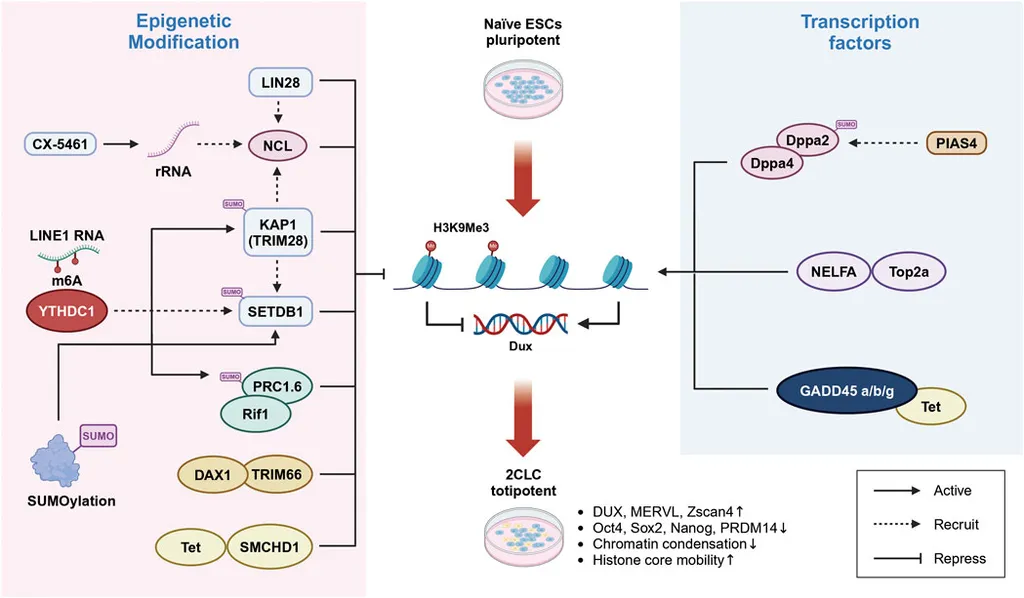In a groundbreaking study published in the journal *Advanced Science*, researchers have uncovered a novel role for the gene FOXH1 in regulating the pluripotency of porcine extended potential stem cells (pEPSCs). This discovery, led by Peng Su from the Institute of Stem Cell and Regenerative Biology at Huazhong Agricultural University in Wuhan, China, could have significant implications for both agricultural biotechnology and regenerative medicine.
The study employed two types of CRISPR-Cas9 screenings to identify genes crucial for cell viability and pluripotency in pEPSCs. The fitness screening revealed several genes essential for cell viability, including PRMT1, MYBL2, and NASP. Concurrently, FACS-based screenings identified genes crucial for pluripotency, such as SOX2, ZFP42, and notably, FOXH1.
Peng Su and his team demonstrated that FOXH1 is required for maintaining pluripotency in pEPSCs, a finding that complements the known role of FOXH1 in mesendoderm specification. “We found that pEPSCs lacking FOXH1 exhibited a flatter and more dispersed clonal morphology, accompanied by downregulation of pluripotency genes and upregulation of lineage-specific genes,” Su explained. This indicates that FOXH1 plays a pivotal role in maintaining the stemness of these cells.
The study also revealed that FOXH1 knockdown significantly impaired blastocyst formation during early pig embryogenesis. Functionally, FOXH1 preserves pluripotency by enhancing chromatin accessibility at pluripotency gene loci, while also influencing lineage specification through H3K4me3 modification at developmental related genes.
The implications of this research are far-reaching. Understanding the molecular mechanisms governing pluripotency and self-renewal in pEPSCs could lead to advancements in agricultural biotechnology, such as improved livestock breeding and disease resistance. In regenerative medicine, this knowledge could pave the way for more effective stem cell therapies.
“This research provides valuable insights into categorizing gene function and uncovers a novel role of FOXH1 involved in the core regulatory network that orchestrates gene expression programs to maintain the pluripotency state of pEPSCs,” Su added.
As the field of stem cell research continues to evolve, this study highlights the importance of CRISPR-Cas9 screening in identifying key genes and their functions. The findings not only deepen our understanding of stem cell biology but also open new avenues for future research and commercial applications.
Published in *Advanced Science*, this study represents a significant step forward in the quest to harness the full potential of stem cells for both agricultural and medical applications. The research team’s work underscores the importance of interdisciplinary collaboration and innovative technologies in driving scientific discovery.

